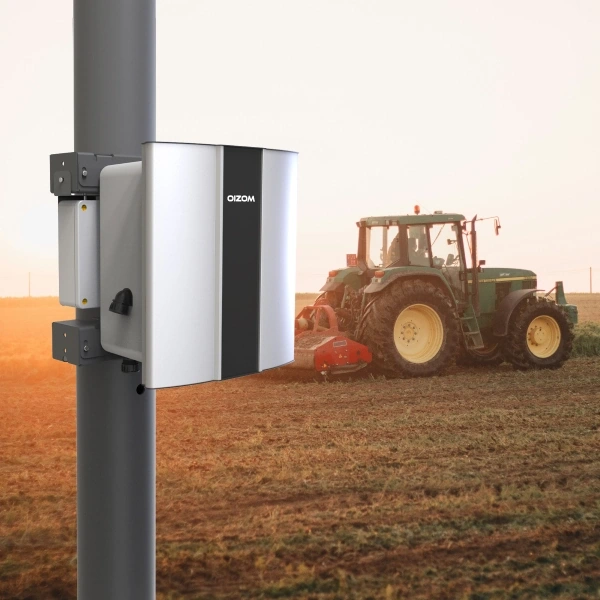Introduction to Odour Emissions in Agriculture
Odour emissions in agriculture represent a significant concern for farmers, residents in rural and suburban areas, as well as regulatory bodies. These odours originate from various sources, such as livestock facilities, composting processes, crop production, and pesticide applications. While natural to an extent, excessive odour emissions can have severe implications for air quality, public health, and overall quality of life.
In the agricultural context, odour is more than an unpleasant smell; it signifies the presence of complex mixtures of gases, including methane, ammonia, hydrogen sulphide, and numerous volatile organic compounds (VOCs). These gases can have a detrimental impact on local air quality, contributing to environmental pollution and climate change.
The Need for Odour Monitoring in Agriculture
Odour monitoring in agriculture has never been more critical due to increased urban sprawl and greater awareness of environmental sustainability. The need to maintain a harmonious relationship with local communities, coupled with the regulatory requirements for air quality management, necessitates the implementation of robust and reliable odour monitoring systems.
Odour monitoring allows farmers to understand and control their odour footprints, leading to more sustainable operations and less community conflict. It provides data-driven insights to identify, measure, and manage odour sources efficiently.
Odour Monitoring Technologies and Methods
There are several approaches to odour monitoring, each with its unique advantages. Direct methods involve the collection of air samples and analysing them in a laboratory. On the other hand, sensor-based systems, like those offered by Oizom, provide real-time, continuous monitoring data, enabling proactive odour management. By employing AI and Machine Learning, these advanced systems can predict odour levels based on weather conditions, operational data, and historical trends.
Key Odour Sources in Agricultural Operations
Livestock facilities and manure management
Livestock facilities, especially large-scale operations, are significant contributors to agricultural odours. Animal waste, when not managed effectively, can emit odours that are both intense and long-lasting.
Composting and waste handling processes
Composting, while beneficial for soil health, can be a potent odour source. The decomposition of organic materials releases gases that often carry strong odours. Similarly, waste handling and storage processes can lead to significant odour emissions if not properly managed.
Crop production and pesticide applications
While often overlooked, crop production and pesticide applications can also contribute to odour emissions. The chemicals used in fertilisers and pesticides can volatilise into the air, contributing to the overall odour profile of a farm.
Odour Mitigation Strategies in Agricultural Settings
There are several strategies that farmers can employ to mitigate odours. These include choosing low-odour feed for livestock, implementing effective manure management practices, employing odour-reducing technologies in waste handling and composting processes, and opting for low-odour pesticides. Additionally, monitoring and controlling operational factors like temperature, humidity, and ventilation can also have a significant impact on odour levels.
Community Engagement and Communication
Regulatory Considerations and Standards
Proactive communication with the local community is critical for maintaining harmonious relationships. Sharing data from odour monitoring systems can help build trust and demonstrate the farm’s commitment to managing odour emissions effectively.
Regulatory bodies have increasingly recognised the importance of odour management, and many have set forth guidelines and standards that farms and other odour-producing operations must adhere to. Odour monitoring systems, such as those provided by Oizom, facilitate compliance with these regulations by providing accurate, real-time data on odour levels.
In addition to meeting regulatory standards, the implementation of odour monitoring systems can also serve as a proactive demonstration of a farm’s commitment to environmental stewardship and community engagement.
Challenges of Odour Monitoring in Agriculture
Despite the clear benefits of odour monitoring, challenges remain. The complex nature of odours, which are often composed of hundreds of different compounds, can make detection and measurement difficult. Additionally, variations in individual sensitivity and the subjective nature of odour perception can complicate the interpretation of monitoring data. However, with advances in technology and an increased understanding of odour chemistry and perception, these challenges are continually being addressed.
Future Trends and Innovations
Mobile Applications for Citizen Engagement: Mobile applications are being developed to engage citizens in odour monitoring and reporting. These apps allow individuals to report odour incidents, provide feedback, and participate in community-based odour management efforts, fostering a collaborative approach to odour control.
Since there are no global odour compliances set, this will be helpful to monitor odour accurately and take action for mitigation.
Conclusion
Odour monitoring in agriculture plays a crucial role in enhancing air quality, promoting environmental sustainability, and fostering positive community relations. With the growing need for responsible agricultural practices and community-friendly operations, it is anticipated that the adoption of sophisticated odour monitoring systems like those offered by Oizom will continue to increase. By embracing these technologies, farms can continue to produce the food we need while also ensuring a cleaner, more odour-free environment for all.
Contact Oizom today to discover how our odour monitoring systems can help your farm improve air quality, meet regulatory standards, and strengthen community relations.






